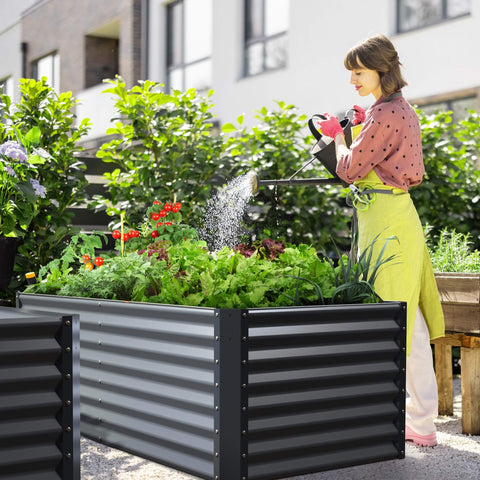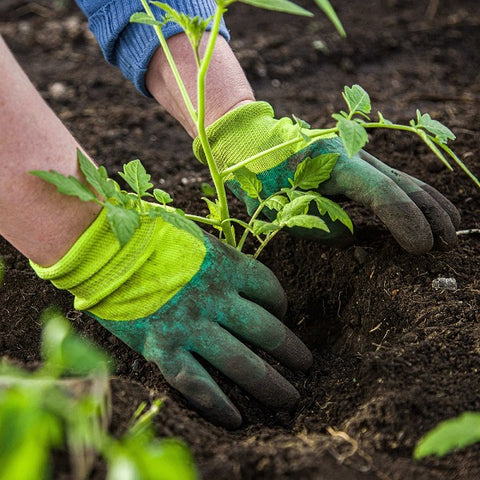Summer gardens are plentiful and easy to grow. That way, you can spend less time sweating in the sun and more time sipping lemonade in the shade of a big tree. Whether buying seedlings to transplant to your garden or sowing them directly, these 9 summer vegetables are fast growing, easy to care for, and will yield plenty of fresh produce even for new gardeners.The following content also has some reference value for raised garden beds.
Green bean
Home-grown green beans are one of the summer delicacies. You can eat the pods straight off the plant for a fresh, vibrant crunch, or take them home and try this recipe for sparkling green beans.
Pole beans will climb on trellises or other supports, and often their longer vines will provide higher yields. Dwarf beans are firm and easy to work with. Plant the beans directly in the garden - they will sprout in a few days and grow quickly.
Green pepper
Bell peppers are not difficult to grow, but red, yellow, and orange peppers can be expensive in stores. You just need a little patience to let them change color and become sweet. Once the harvest begins, a few large bell pepper plants will provide you with plenty of peppers. A great way to use them is with these stuffed pepper recipes.
Cucumber
Like beans, cucumbers also come in the form of vines or shrubs, and the type of vine is easy to train to be vertical. These plants grow quickly, and if given sunlight, about an inch of water a week, and fertile soil, they produce crunchy cucumbers. Fresh or pickled cucumbers are delicious, so you'll have no trouble putting your harvest to good use.
Eggplant
The eggplant is a close relative of the tomato and is a beautiful plant to grow in the summer garden. They love heat, and their dark fruits provide them with many delicious recipes. If possible, water the eggplant continuously from below and mulch it under the plant. When harvesting, use a knife to cut off the stems - don't try to pull them off or you may harm the plant.
Watermelon
Okay, melons are considered fruits, and that's a list of vegetables, but a summer garden doesn't seem complete without some cantaloupe or watermelon. Home-grown varieties are usually much sweeter than store-bought ones because you can pick and eat them at their most ripe. These plants are easy to grow - just sprinkle a few seeds in the soil, mulch, and water. Vines can be trained to climb on trellises or cow boards to save space and look great.
Okra
Okra, anyone? Okra is another vegetable that loves the heat, and it is an excellent summer vegetable that is usually grown in the South, but growers in the north can also grow okra successfully. Okra plants grow very large, so there are 18 inches between plants and 2-3 feet between rows. When the plant reaches chest height, pruning the top of the plant can encourage growth for a larger harvest.
Harvest when the pods are 3-4 inches long. If they get too big or too old, they lose quality. The flowers of okra are large and beautiful, so this plant has two roles, one is a beautiful flower, and the other is a delicious food. Red varieties are also available.
Zucchini
Summer squash, such as meatloaf squash, yellow-necked squash, and especially zucchini, are known for overproducing. Especially around August, when people see you bringing more zucchini to share, they may start locking their cars and not opening the door. These plants are usually directly seeded and will produce in large quantities if kept weed-free and with sufficient moisture in fertile soil. Water from below with a soaker hose or drip tape and place mulch around the plant to reduce powdery mildew.
Sweet corn
Fresh corn harvested from your garden is a sweet summer treat. There is an old saying that you should boil water before picking corn, because the sugar in the kernels starts to turn into starch as soon as it is picked.
Sow corn directly in the garden, planting it in blocks rather than long rows - corn is wind pollinated and does not get good pollination in one long row, resulting in ears that are not fully filled with kernels. Corn has shallow roots, so be sure to water it during dry periods.
Tomato
No list of summer vegetables would be complete without tomatoes. Yes, they are technically a fruit, but they are more often considered vegetables. There are seemingly endless varieties of tomatoes to choose from, and most are easy to grow. Some types of tomatoes are better suited for specific uses, such as slicing, canning sauces or juicing. However, don't think you can't add Roma tomato slices to your burger because it's tomato sauce.
To make your summer gardening easier, lay mulch underneath these vegetables. Mulch suppresses weeds, keeps the soil mulched and cool, and reduces the need for watering.
Also consider installing a hose or drip belt irrigation system to make irrigation easier to manage. They are inexpensive, easy to install, and, combined with mulch, will greatly reduce problems such as tomato powdery mildew and blight.
Don't forget that summer vines give rise to autumn pumpkins. Traditional fall crops such as squash, butternut squash, parsnips, and turnips need a place in your garden all summer long.









